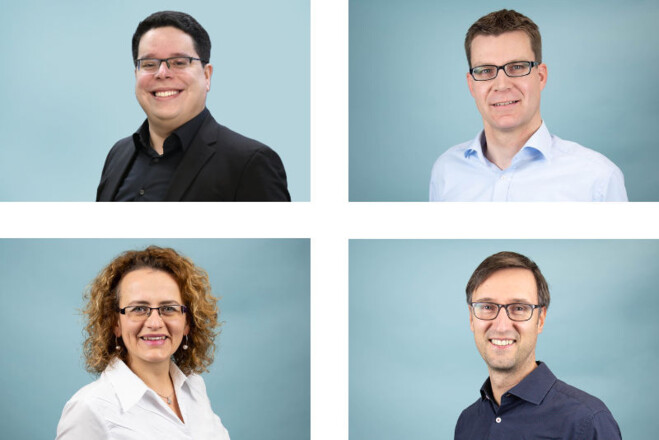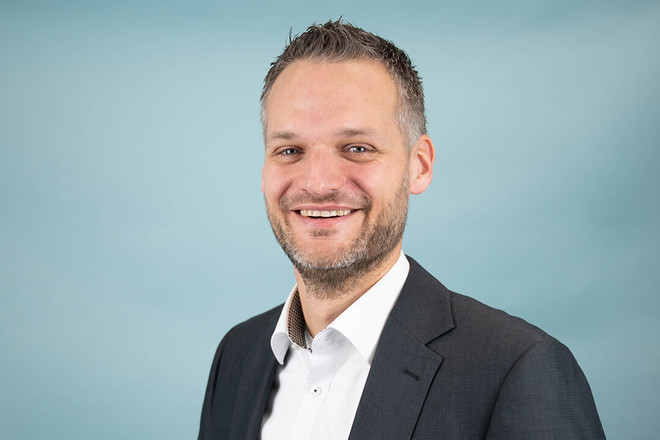Import projects
OGE is actively shaping the energy transition in Europe – and helping to secure imports into Germany
Get an overview of exciting projects along the import corridors in which OGE is involved.
In addition to our initiatives and alliances at EU level, we are pursuing a number of projects with a European dimension. One focus here is on import corridors for hydrogen to be fed into the H2 core grid. Hydrogen-Production in Germany will not be able to meet the country’s expected demand, which is why Germany will have to rely on imports for two thirds of its hydrogen consumption. The import corridors will fill this gap and thus contribute to an efficient H2 ramp-up and a secure energy supply. To diversify the import routes, we have teamed up with a number of partners to develop projects in all directions that are closely linked to the core grid. In this way, large quantities of hydrogen will be produced in favourable regions and made available to the German market at the most competitive prices possible.
- Import corridors
- German core grid
- Transition point to OGE grid
North Sea Corridor
Clean Hydrogen to Europe (CHE)/AquaDuctus
High potential for the production of low-carbon hydrogen in Norway and the countries bordering the North Sea as well as transport through the North Sea to Germany.
- Companies involved: Equinor, Gassco, Fluxys, Gascade
- Capacity: 432 GWh/d
- COD: 2030
Blue hydrogen: Produced by reforming natural gas through the steam methane reforming process, whereby the CO2 is captured and stored.
Further information can be found on the project website at aquaductus-offshore.de
Dutch Backbone
OGE and Gasunie are jointly coordinating network development activities to connect the Dutch hydrogen grid to the H2 core grid via three cross-border interconnection points.
In addition to domestic production sites, the Dutch hydrogen grid will be connected to North Sea ports importing hydrogen and ammonia. This will allow green and blue hydrogen to be supplied to Germany.
Further information can be found on the project website at www.gasunie.nl
Belgian Backbone
OGE and Fluxys are jointly coordinating the network development activities to connect Belgium’s hydrogen grid with the H2 core grid as early as 2028.
In addition to domestic production volumes, the Belgian hydrogen network will also carry hydrogen imported through North Sea ports, allowing green and blue hydrogen to flow to Germany.
DRC
Early network link to transport hydrogen from Rotterdam to North Rhine-Westphalia and beyond.
- Project partners: BASF, Gasunie, Shell
- Capacity: 144 GWh/d
Further information can be found on the project website at www.delta-rhine-corridor.com
Nordic-Baltic Corridor
Czech-German Hydrogen Interconnector (CGHI)
Route connecting the substantial hydrogen production potential in northern Germany and the Baltic Sea region to the centres of demand in (southern) Germany.
- Project partners: GASCADE, NET4GAS
- Capacity: 144 GWh/d
- COD: 2030
- Share of repurposed pipelines: 100 %
Further information can be found on the project website at www.cghi.eu
Eastern European Corridor
CEHC
Route connecting the substantial hydrogen production potential in Ukraine to the centres of demand in (southern) Germany.
-
Project partners:
GTSOUA, eustream, NET4GAS - Capacity: 144 GWh/d
- COD: 2030
Further information can be found on the project website at www.cehc.eu
H2EU+Store
International industry partnership to accelerate the market ramp-up of green hydrogen in Central Europe, taking into account the entire value chain from production, transport and storage to offtake.
-
Project partners:
Initiators: RAG Austria AG, eco optima
Project members: bayernets, bayerngas, Gas Connect Austria, nafta, eustream, MND
Supporters: GTSOUA, SSO of Ukraine - COD: 2030
Further information can be found on the project website at www.h2euplusstore.com
Adriatic Corridor
SunsHyne
Pipeline to transport of low-cost green hydrogen from North Africa via Italy, Austria, Slovakia and the Czech Republic to Germany.
- Project partners: Snam, TAG, eustream, NET4GAS
- Capacity: 142 GWh/d
- COD: 2030
- Share of repurposed pipelines: approx. 80 %
Further information can be found on the project website at www.sunshynecorridor.eu
Iberian Corridor
H2med
Route to ship up to 8 Mt/a of green hydrogen produced in Portugal and Spain and via France to Germany with a potential onward connection to Morocco and Algeria.
- Project partners: REN, Enagás, Teréga, GRTgaz
- Capacity: 192 GWh/d
- COD: 2030
- Share of repurposed pipelines: approx. 50 %
Further information can be found on the project website at h2medproject.com
BarMar
Offshore pipeline-section from Barcelona to Marseille to connect Spain and France.
- Project partners: Enagás, Teréga, GRTgaz
- 455 km newbuilt pipeline
South-Eastern European Corridor
South-East European Hydrogen Corridor (SEEHyC)
Development of a hydrogen pipeline connection from Greece via Bulgaria, Romania, Hungary, Slovakia and the Czech Republic to Germany.
- Project partners: DESFA, Bulgartransgaz, Transgaz, FGSZ, eustream, NET4GAS
- Capacity: 80 GWh/d (GR) – 144 GWh/d (Waidhaus)
- COD: 2030
- Share of repurposed pipelines: approx. 22 %
Further information can be found on the project website at seehyc.eu

